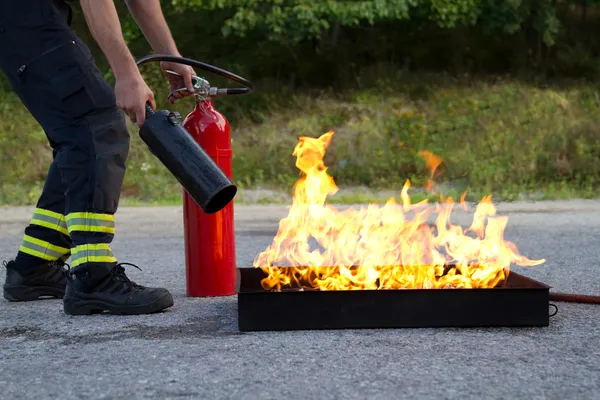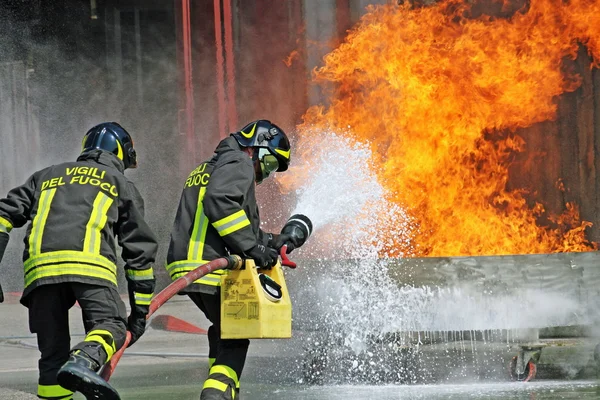Flames Of Knowledge: Mastering Fire Safety Training Techniques
In the realm of fire safety, knowledge is the most potent tool in our arsenal. From understanding the behavior of flames to mastering evacuation protocols, the journey towards fire safety mastery is both complex and critical. Welcome to "Flames of Knowledge: Mastering Fire Safety Training Techniques," where we embark on a journey to explore the essential methods and strategies necessary to ensure preparedness and mitigate risks. Join us as we delve into the intricacies of fire safety training, illuminating the path towards a safer, more resilient future.
Understanding the Importance of Fire Safety Training
The Human and Economic Cost of Fires
Fires pose significant risks to both human life and property. Beyond the immediate dangers of burns and smoke inhalation, fires can result in severe injuries, fatalities, and long-term health complications. Moreover, the economic toll of fires can be staggering, encompassing property damage, business interruption, and healthcare expenses. According to the National Fire Protection Association (NFPA), fires in the United States alone caused an estimated $25.6 billion in direct property damage in 2019.
Legal and Regulatory Compliance
Compliance with fire safety regulations is not just a moral imperative but also a legal requirement. Governments and regulatory bodies establish stringent standards for fire prevention, evacuation procedures, and emergency response protocols to safeguard public safety. Failure to adhere to these regulations can lead to fines, litigation, and reputational damage for businesses and organizations.
Fundamental Principles of Fire Safety Training

Fire Behavior and Characteristics
To effectively combat fires, one must first understand their behavior and characteristics. Fires progress through distinct stages, including ignition, growth, fully developed, and decay. Factors such as fuel type, ventilation, and environmental conditions influence the rate and intensity of fire spread. By comprehending these dynamics, individuals can make informed decisions during emergencies and execute appropriate response strategies.
Risk Assessment and Hazard Identification
Conducting comprehensive risk assessments is essential for identifying potential fire hazards and vulnerabilities within a given environment. This involves evaluating building structures, electrical systems, chemical storage practices, and human behavior patterns. By pinpointing potential ignition sources and fuel loads, safety professionals can implement proactive measures to mitigate risks and enhance preparedness.
Fire Prevention and Mitigation Strategies
Prevention is the cornerstone of effective fire safety. Implementing measures such as proper storage of flammable materials, regular maintenance of electrical systems, and adherence to smoking policies can significantly reduce the likelihood of fires occurring. Additionally, installing fire detection and suppression systems, such as smoke alarms, sprinklers, and fire extinguishers, can help contain small fires before they escalate into major emergencies.
Best Practices in Fire Safety Training
- Hands-On Simulation Exercises: Conduct regular fire drills and simulation exercises to familiarize participants with evacuation procedures, firefighting equipment, and emergency response protocols. Practical training enhances preparedness and ensures rapid, effective responses during real emergencies.
- Comprehensive Risk Assessment: Prioritize comprehensive risk assessments to identify potential fire hazards, vulnerabilities, and mitigation strategies tailored to specific environments. Understanding the unique challenges and characteristics of each setting is essential for developing targeted fire safety measures.
- Continuous Education and Awareness: Foster a culture of fire safety through ongoing education, training, and awareness campaigns. Regularly update participants on fire prevention techniques, evacuation procedures, and the importance of early detection and reporting to empower individuals and organizations to take proactive measures.
- Integration of Technology: Embrace technological advancements, such as virtual reality simulations and interactive e-learning platforms, to enhance fire safety training effectiveness and accessibility. Harnessing technology enables realistic training experiences, scalability, and innovative approaches to address evolving challenges in fire safety management.

Advanced Fire Safety Training Techniques
Fire Suppression Systems and Techniques
In addition to prevention and evacuation strategies, understanding fire suppression systems and techniques is crucial for effective fire safety training. Various suppression methods, such as water-based systems, foam systems, and gas-based systems, are available to combat different types of fires. Training participants in the proper use and limitations of these systems ensures that they can respond appropriately to diverse fire scenarios.
Specialized Training for High-Risk Environments
Certain environments, such as industrial facilities, laboratories, and healthcare settings, present unique fire safety challenges due to the presence of hazardous materials, specialized equipment, and vulnerable populations. Providing specialized training tailored to these environments is essential for equipping personnel with the knowledge and skills necessary to mitigate risks and respond effectively to emergencies.
Harnessing Technology for Fire Safety Training
- Virtual Reality Simulations: Utilize virtual reality (VR) simulations to provide immersive and realistic training experiences, allowing participants to practice firefighting techniques and emergency response procedures in a safe and controlled environment.
- Interactive E-Learning Platforms: Implement interactive e-learning platforms that offer multimedia-rich content, interactive modules, and assessment tools to engage participants and reinforce learning objectives, increasing accessibility and participation rates.
- Artificial Intelligence (AI) Integration: Integrate artificial intelligence (AI) technology to analyze data, predict fire risks, and provide real-time recommendations for evacuation routes and firefighting tactics, enhancing decision-making and response effectiveness.
- Remote Training Solutions: Leverage remote training solutions, such as webinars and online courses, to deliver fire safety training to a wide audience, regardless of location or scheduling constraints, promoting continuous learning and skill development. Join Metrofire for more details.
The Future of Fire Safety Training
Integration of Artificial Intelligence (AI)
The integration of artificial intelligence (AI) holds promise for revolutionizing fire safety training by analyzing vast amounts of data, predicting fire risks, and optimizing response strategies. AI-powered systems can monitor fire alarms, analyze building layouts, and provide real-time recommendations for evacuation routes and firefighting tactics. By harnessing the power of AI, organizations can enhance their ability to prevent, detect, and respond to fires more effectively.
Collaborative Training Initiatives
Collaborative training initiatives bring together stakeholders from diverse sectors, including government agencies, emergency responders, industry associations, and community organizations, to share best practices, resources, and expertise. By fostering collaboration and information sharing, these initiatives promote a holistic approach to fire safety that addresses interconnected challenges and strengthens community resilience.

